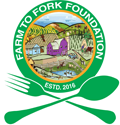Camel production in Kingdom of Saudi Arabia: Economic and environmental impacts
DOI:
https://doi.org/10.5455/faa.302299Keywords:
Meteorological year, CO2 emission, camel product, land Use, KSAAbstract
This research aimed to analyse the impact of land use elements, meteorologi- cal year (MY) (temperatures changes) and carbon dioxide (CO2) emissions on camel numbers, prices and products, the study was adopted two sets of data termed as economic data and environmental data. Secondary data through years 1991∼2016 is approved with supportive primary data, which designed by researchers via personal interviews of the camel producers were used. Simple descriptive, matrix correlations and multiple linear regressions tools techniques were used to analyse the data. The study results confirmed that, all the owners of the camel are men. Furthermore, the percentages of the camel share to the total livestock are positively correlated with camel numbers (r = 0.964, p<0.01). However, the land use has a significant influ- ence on camel share to total livestock and camel numbers. Increases in the agricultural and arable land use were resulted in a reduction of the camel numbers (r = −0.458, p<0.01 and r = −0.814, p<0.05; respectively). Moreover, the changes in MY had inverse effect on camel numbers (β = −14839.52) and milk production (β = −1898.19). Camel numbers, producers’ prices and camel production were significantly effected by CO2 emissions from indus- trial and energy sources. It concluded that, land use had highly significant impact on camel share to the total livestock population; however, climatic change significantly affects camel numbers, and camel production. Further studies of the camel economics knowledge were recommended.
Downloads
Downloads
Published
How to Cite
Issue
Section
License
Copyright (c) 2018 by the author(s). This work is licensed under a Creative Commons.

This work is licensed under a Creative Commons Attribution-NonCommercial 4.0 International License.




















